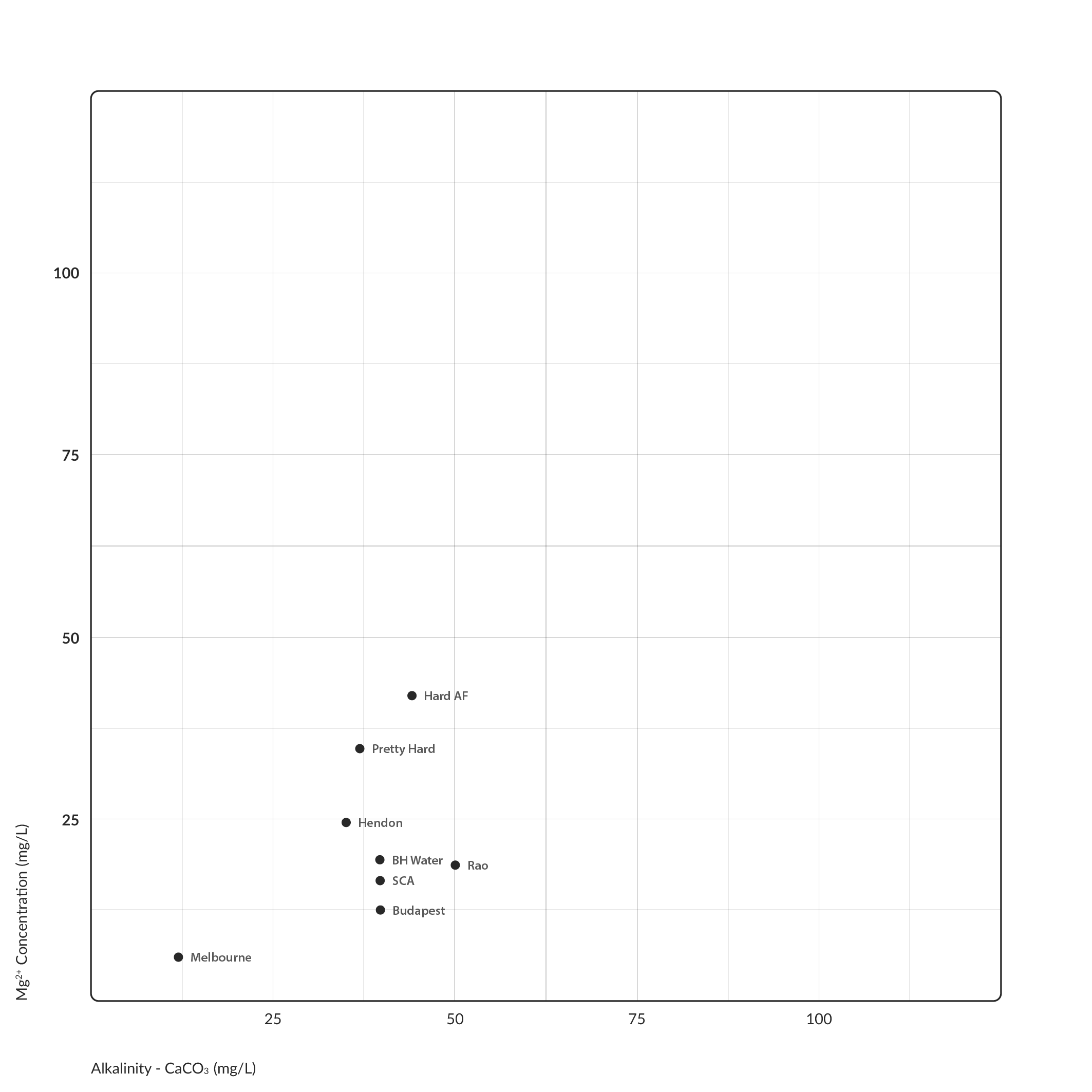Basic Brew Water Recipes

This chart plots these recipes on the water control chart
To create the following recipes, you will add a small amount of each concentrate to a separate volume of fresh, deionised water. Note that these recipes use magnesium, not calcium, as the source of permanent hardness. This method requires ingredients you can easily obtain from any supermarket.
Please note, because these recipes use distilled water as the starting point, and don’t contain any calcium ions, there is some possibility that they may be corrosive. For this reason we don’t recommend using these recipes in costly coffee making equipment. However, with made stainless steel pouring kettles you will be at far less risk of corrosion and the cost of replacing a rusty pouring kettle is far less. Furthermore, if you remove all the water from your pouring kettle after use, then greatly reduces the risk to your pouring kettle by limiting the exposure of the steel to the water. This is easy to do with a pouring kettle each day but quite complicated with an espresso machine.
Recipe 1: Melbourne Water
11.5 g buffer
23.7 g magnesium concentrate
964.8 g distilled/ultrapure water
This creates a close approximation to Melbourne water. This is very ‘soft’ water, low in mineral content and useful for those long filter brews or cuppings drawn out over 5 to 10 minutes. It would also help with those darker espresso roasts that don’t need as much help extracting out flavours.
Recipe 2: WOC Budapest Water
40.1 g buffer
51.2 g magnesium concentrate
908.7 g distilled/ultrapure water
This is in the target range for the World Brewers Cup in Budapest (51 mg/L total hardness as CaCO3, 40 mg/L alkalinity).